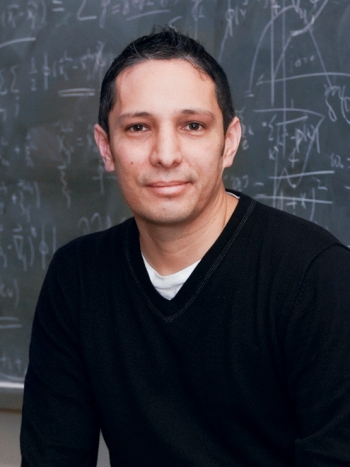
By
The universe is awash in terahertz (THz) waves, as harmless as they are abundant. But unlike other regions of the electromagnetic spectrum, says Professor of Physics Willie J. Padilla, THz has proven to be extremely difficult to manipulate in order to capture novel images of objects and materials with which these light waves interact.
Most existing THz imaging devices employ prohibitively expensive technology or require several hours and cumbersome manual controls to generate a viable image, according to Padilla.
Padilla and researchers in his lab recently reported a breakthrough in efforts to create accessible and effective THz imaging. Using both optical and electronic controls, the team developed a single-pixel imaging technique that uses a coded aperture to quickly and efficiently manipulate stubborn THz waves, according to a recent report in the journal Optics Express.
In the so-called terahertz gap, a region of wavelengths that falls between microwave and infrared frequencies, conventional electronic sensors and semiconductor devices are ineffective. Some systems capture only a fraction of a scene and the means to tune these THz waves are inefficient. This has fueled the search for new imaging technologies in order to manipulate THz waves.
Efforts to overcome the challenges of mechanics, cost and image clarity are viewed as a crucial step in efforts to tame the THz gap since imaging and sensing at this frequency holds the potential for advances in areas as divergent as chemical fingerprinting, security imaging of hidden weapons, even real-time skin imaging to promote simple detection of skin cancer.
Central to this challenge is the development of a technology to create efficient masks — similar to the aperture of a camera — capable of tuning THz radiation in order to produce clear images in just a few seconds.
Padilla and graduate students David Shrekenhamer and Claire M. Watts report their new single pixel imaging method centers on what they describe as a “coded aperture multiplex technique” where a laser beam and electronic signals are used to send a set of instructions to a semiconductor so it can guide the reproduction of the image of an object after THz waves have passed through it.
Read the full text of this story at http://www.bc.edu/content/bc/offices/pubaf/news/2013-may-jun/padilla-lasers.html



